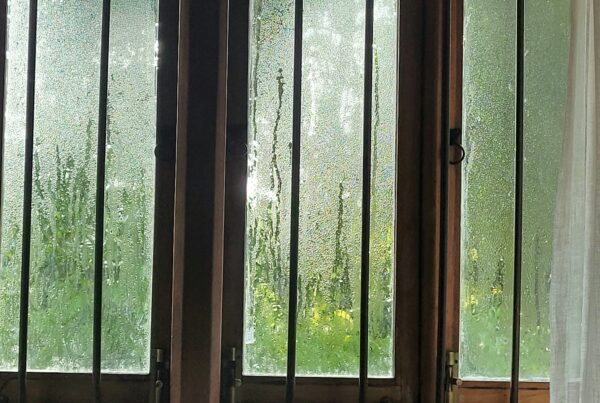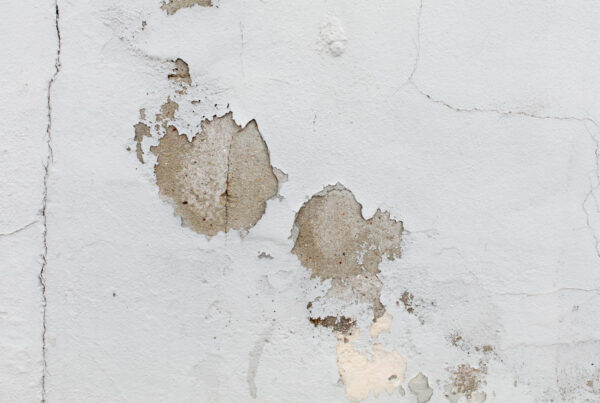Discovering mould spores on walls can be alarming, considering how they create immediate health concerns and indicate underlying moisture problems requiring prompt attention. Understanding what causes mould growth, recognising the health risks, and implementing effective solutions matters for your wellbeing and prevents property damage.
In this article, you will explore the leading causes of wall mould, learn about health implications, understand immediate action steps, and explore prevention strategies.
What Causes Mould Spores on Walls?
Mould spores on walls develop when three conditions combine: moisture, organic material, and suitable temperatures. The primary causes of wall mould include:
- Excessive humidity levels – Indoor humidity above 60% creates ideal conditions for mould spores to germinate and establish colonies
- Condensation problems – Poor ventilation causes warm, moist air to condense on cold wall surfaces, providing the moisture that mould requires
- Water leaks and penetrating damp – Roof leaks, plumbing failures, or damaged pointing introduce moisture that penetrates wall materials
- Rising damp issues – Ground moisture travelling upward through walls creates persistent dampness, ideal for the establishment of mould
- Thermal bridging – Cold spots on walls where insulation is inadequate cause condensation formation and subsequent mould growth
Properties experiencing persistent condensation issues develop recurring mould problems that benefit from professional moisture control solutions.
What Are the Health Risks of Mould Spores?
Mould spores pose serious health risks, especially for vulnerable people, including children, elderly people, and those with respiratory conditions or compromised immune systems. Health effects of mould exposure include:
- Respiratory problems – Mould spores trigger asthma attacks, cause persistent coughing, and can lead to serious breathing difficulties
- Allergic reactions – Skin irritation, watery eyes, runny nose, and sneezing commonly occur with mould exposure
- Toxic effects – Some mould species produce mycotoxins that cause headaches, fatigue, and more serious health complications
- Immune system impacts – Prolonged exposure can weaken immune responses and increase susceptibility to other illnesses
- Severe reactions – Individuals with mould allergies may experience severe reactions requiring immediate medical attention
Black mould is especially harmful because it produces mycotoxins. With sustained exposure, these toxic compounds can cause serious neurological symptoms and long-term health problems.
What Solutions Work for Mould on Walls?
Effective mould treatment requires immediate action to remove existing growth combined with long-term moisture control to prevent recurrence.
Immediate mould removal steps
A safe mould removal process includes:
- Wear protective equipment – Use gloves, eye protection, and face masks to prevent spore inhalation during cleaning.
- Isolate affected areas – Close doors and cover vents to prevent spore spread to unaffected rooms.
- Remove surface mould – Clean small areas using fungicidal washes or diluted bleach solutions on non-porous surfaces.
- Dispose of materials safely – Bag contaminated materials and dispose of them immediately to prevent re-contamination.
- Dry thoroughly – Ensure complete drying of cleaned areas using fans, dehumidifiers, or increased heating.
Small mould patches on non-porous surfaces like tiles or painted walls can be cleaned successfully with suitable products. However, porous materials like wallpaper, fabric, or unsealed plaster may require professional removal or replacement.
Long-term moisture control solutions
Improve ventilation throughout your home by using extractor fans in bathrooms and kitchens, opening windows regularly for air circulation, and ensuring adequate heating to prevent condensation formation on cold surfaces.
Reduce indoor humidity levels by using dehumidifiers in problem areas, covering cooking pots to prevent steam release, and avoiding indoor clothes drying, which releases moisture into your home’s atmosphere.
Address structural moisture problems that create persistent dampness conducive to mould growth. Properties struggling with rising or penetrating dampness issues require professional treatment to remove moisture ingress that feeds mould growth. If required, it’s usually worth investing in professional basement waterproofing in London to protect your property.
When Should You Contact The Specialists?
Professional intervention becomes necessary when mould problems exceed safe DIY removal limits or when underlying moisture issues require specialist treatment.
Contact professionals immediately if mould covers areas larger than 1 square metre, appears in multiple locations throughout your home, returns quickly after cleaning, or affects porous building materials like timber or plaster.
Health considerations also dictate professional intervention. Professional assessment and removal are also needed if anyone in your household experiences persistent respiratory symptoms, allergic reactions, or other health problems correlating with mould presence. The experienced team at Refresh can identify whether mould results from condensation issues, rising damp, penetrating moisture, or ventilation problems.
How Can You Prevent Future Mould Growth?
Effective mould prevention focuses on moisture control and environmental management to create conditions unsuitable for mould establishment. Control indoor humidity levels through adequate ventilation, prompt leak repairs, and appropriate heating that prevents condensation formation.
Regular property maintenance prevents moisture ingress that creates mould-friendly conditions. Keep gutters clear, repair roof damage promptly, and address pointing defects that allow water penetration.
Improve air circulation in problem areas by using mechanical ventilation, strategically opening windows, and ensuring furniture doesn’t block natural airflow around rooms. Good ventilation removes moisture-laden air before condensation occurs.
Eliminate Mould Problems with Expert Moisture Solutions
Mould spores on walls indicate underlying moisture problems that threaten your health and your property’s value. The moisture control specialists at Refresh Property Services and Consultants understand how condensation, rising damp, and ventilation issues create mould-friendly conditions in London properties.
Our assessment service identifies the specific causes of mould growth and recommends targeted solutions that eliminate moisture sources permanently. From ventilation improvements to structural damp treatments, we deliver comprehensive solutions that protect your home and family. Contact us for professional mould assessment and expert moisture control solutions



